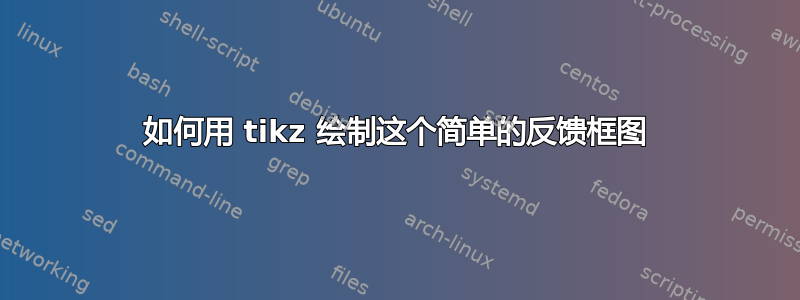
答案1
起点可以是
\documentclass[tikz,14pt,border=10pt]{standalone}
\usepackage{textcomp}
\usetikzlibrary{shapes,arrows}
\usetikzlibrary{positioning}
\begin{document}
% Definition of blocks:
\tikzset{%
block/.style = {draw, thick, rectangle, minimum height = 3em,
minimum width = 8em, fill=white, text width=2.5cm},
sum/.style = {draw, circle, node distance = 2cm}, % Adder
input/.style = {coordinate}, % Input
output/.style = {coordinate}, % Output
virtual/.style = {coordinate},
}
% Defining string as labels of certain blocks.
\newcommand{\suma}{\Large$+$}
\begin{tikzpicture}[auto, thick, node distance=2cm, >=triangle 45]
\draw
% Drawing the blocks of first filter :
node at (0,0){}
node [input, name=input1] {}
node [block, right = 1cm of input1] (inte2) {LDPC Encoder}
node [block, right = 1cm of inte2] (inte3) {BPSK modulator}
node [block, right = 1cm of inte3] (inte4) {Intersymbol intereference (ISI)}
node [sum, right = 1cm of inte4] (suma1) {\suma}
node [input, name=input2, above = 1cm of suma1] {}
node [output, name=output1, right = 1cm of suma1] {};
\node [block, right = 1cm of output1] (model) {Model};
\node [block, right = 1.5cm of model] (model1) {Model1};
\node [virtual, left=of model.165] (input) {};
\node [virtual, right=of model1.0] (output) {};
\node [virtual, below left=of model.west] (feedback) {};
% Joining blocks.
% Commands \draw with options like [->] must be written individually
\draw[->](input1) -- node {$m$}(inte2);
\draw[->](inte2) -- node {$c$}(inte3);
\draw[->](inte3) -- node {$x$}(inte4);
\draw[->](inte4) -- node {$x+h$}(suma1);
\draw[->](input2) -- node {$w(t)$} (suma1);
\draw [->] (suma1.30) -- node {$y$} (model.171);
\draw[->](model) -- node {$q_\Phi(x|y)$} (model1);
\draw [->] (model1) -- node [name=y] {$p(x)$}(output);
\draw [->,rounded corners] (model1) -- (y.south) |- (feedback) |- (model.195);
\end{tikzpicture}
\end{document}
这将给你:
当然,您可以分别使用和来调整block每个单独(已定义)块的定义,以将多行文本居中,我将其留给您作为练习:)。minimum widthtext width




